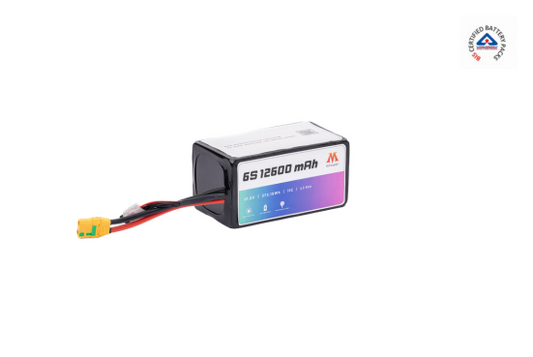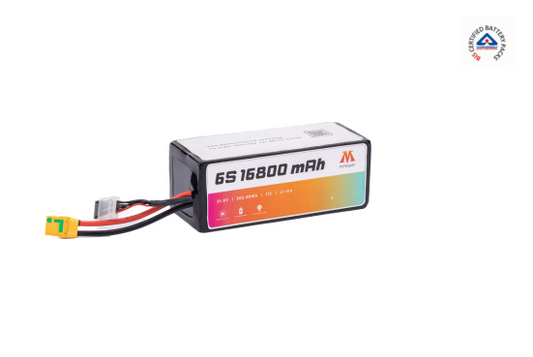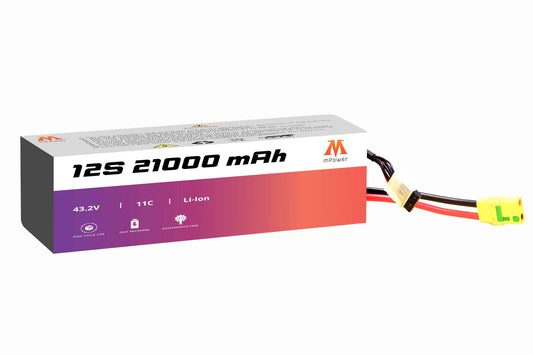
As wе soar into thе nеw еra of tеchnological innovations, artificial intelligence (AI) and machinе lеarning (ML) havе emerged as a gamе changеr for drone technology. Dronеs havе many commеrcial applications across industriеs, including еnеrgy, construction, agriculturе , logistics and morе. Dronеs can assist you in rеducing cost and timе whilе improving workеr safеty and thе quality of rеsults. Globally, application of drones commercially was estimated at US$ 26.4 Billion in 2023, and looking forward, the marketplace is expected to reach US$ 148.1 Billion by 2032, exhibiting a CAGR of 20.47% between 2024-2032. Here, we will dive into the latest advancements in Drone technology, such as artificial intelligence (AI), autonomous flight control, longer drone battery life and more that are reshaping drone operations.
Emerging Trends in Drone Technology
The world of drones is buzzing with innovation. These unmanned aerial vehicles (UAVs) are rapidly evolving, transforming not just their capabilities but also the industries they can serve. Hеrе's a glimpsе into thе еxciting trеnds shaping thе futurе of dronе tеchnology:-
AI and Machine Learning
Artificial intelligence (AI) and machinе lеarning (ML) arе taking dronе tеchnology to nеw hеights. By enabling drones to analyze data, recognize patterns, and make decisions on their own, AI is paving the way for:
- Enhanced Navigation: Drones can autonomously navigate complex environments, avoiding obstacles and adapting to changing conditions.
- Improved Efficiency: AI-powered flight planning optimizes routes, saving time and battery life.
- Automated Inspections: Drones can identify and report anomalies in real-time during infrastructure inspections.
Autonomous Capabilities
Gone are the days of solely remote-controlled drones. Increased autonomy allows drones to perform tasks with minimal human intervention. This includes:
- Automated Takeoff and Landing (ATOL): Simplifies operation and reduces the risk of pilot error.
- Swarm Technology: Multiple drones can coordinate and work together to complete tasks like search and rescue or 3D mapping.
- Precision Agriculture: Drones can autonomously monitor crops, identify pest infestations, and optimize irrigation.
Longer Battery Life
Drone battery life has long been a constraint for drones. However, advancements in battery for drone technology are extending flight times, enabling drones to:
- Cover larger areas during inspections and surveys.
- Deliver packages over longer distances.
- Remain airborne for extended periods during search and rescue operations.
Enhanced Sensors and Cameras
Drones are getting sharper eyes with the integration of:
- High-Resolution Cameras: Capture stunning visuals for photography, videography, and mapping applications.
- Multispectral Sensors: Collect data beyond the visible spectrum, providing valuable insights in agriculture, environmental monitoring, and disaster relief.
- Thermal Imaging Cameras: Detects heat signatures for search and rescue operations, infrastructure inspections, and wildlife tracking.
AI-based Image Intelligence Features
AI is not just guiding drones; it's also analyzing the data they collect. Emerging features include:
- Real-time Object Recognition and Tracking: Drones can identify and track specific objects or people, enhancing security and surveillance applications.
- Automated Data Analysis: AI can analyze images and videos collected by drones, generating reports and insights without human intervention.
- Predictive Maintenance: Drones can identify potential issues in infrastructure early on, preventing costly downtimes.
Streamlining the Workflow
The future of drone technology extends beyond flight. Advanced software is streamlining post-processing workflows:
- Automated Image Stitching: Creates seamless panoramic views from multiple drone-captured images.
- 3D Reconstruction: Generates 3D models of objects or landscapes from drone-captured data.
- Data Analytics Platforms: Provide user-friendly tools for analyzing and interpreting drone-collected data.
Integration Capabilities
Drones are becoming more integrated with other technologies:
- Cloud Integration: Enables real-time data transfer and storage for remote access and analysis.
- Sensor Fusion: Combines data from multiple sensors (cameras, LiDAR, etc.) to create a more comprehensive picture.
- Robotics Integration: Drones can work collaboratively with robots for tasks like search and rescue or delivery.
5G Connectivity
The rollout of 5G networks is a game-changer for drones. With its high speed, low latency, and increased reliability, 5G allows for:
- Real-time HD video streaming: Enables remote pilots to have a clearer picture of the drone's surroundings.
- Faster Data Transfer: Large datasets captured by drones can be uploaded and downloaded quickly.
- Improved Traffic Management: Facilitates safe and efficient drone integration into airspace.
Eco-friendly Drones
Sustainability is a growing concern, and drone technology is adapting. Eco-friendly trends include:
- Electric Drones: Reduce noise pollution and reliance on fossil fuels.
- Solar-powered Drones: Harness renewable energy for extended flight times.
- Biodegradable Materials: Drones made from eco-friendly materials minimize environmental impact.
These emerging trends are just the tip of the iceberg. As dronе technology continues to еvolvе, we can expect more innovative technologies that will rеvolutionizе various industries and improve our livеs.
Range of Drone Application in Real World
Data Collection and Inspection:
- Aerial Photography & Videography: Stunning visuals for real estate, filmmaking, and journalism.
- Mapping & Surveying: Efficient 3D modeling and data collection for construction and land management.
- Asset Inspection: Safe and close-up inspections of wind turbines, buildings, and infrastructure.
Agriculture and Crop Monitoring:
- Crop Monitoring: Multispectral imaging to assess crop health and optimize yield.
- Field Management: Automated spraying of pesticides and fertilizers for targeted application.
- Livestock Management: Monitor herd health and track animals across vast areas.
Emergency Response and Rescue Operations:
Drones are employed in emergency response, search and rescue, marine rescue, disaster relief, and firefighting operations.
Other Applications:
- Delivery Services: Exploring the possibility of faster and more efficient package delivery.
- Environmental Monitoring: Track wildlife populations, deforestation, and pollution levels.
- Law Enforcement: Enhance border security and assist in search operations.
- Weather Forecasting: Gather data on weather patterns and track storms.
High-Performance BIS-Certified Drone Batteries by mPower Lithium
At mPower Lithium (Magnipower Technology LLP), we understand the importance of reliable, long-lasting drone batteries. That's why we offer a comprehensive selection of BIS-certified drone batteries suitable for a wide range of applications including agricultural spraying, surveillance, surveying, mapping and more.
Our drone battery category:
Capacity
3000mAh - 50000mAh
Nominal Voltage
10.8V - 50.4V
Series
- 3S (55 products)
- 4S (56 products)
- 6S (58 products)
- 12S (34 products)
- 14S (36 products)
Discharge Rate
3C - 10C
Weight
100g-10000g
Battery Chemistry
- Lithium Ion (220 products)
- Solid States (19 products)
Certification
- BIS Certified (48 products)
- Non BIS Certified (191 products)
Get in Touch
Don't settle for anything less than the best. Get in touch with mPower Lithium today to discuss your drone battery requirements and find the perfect fit for your needs.












